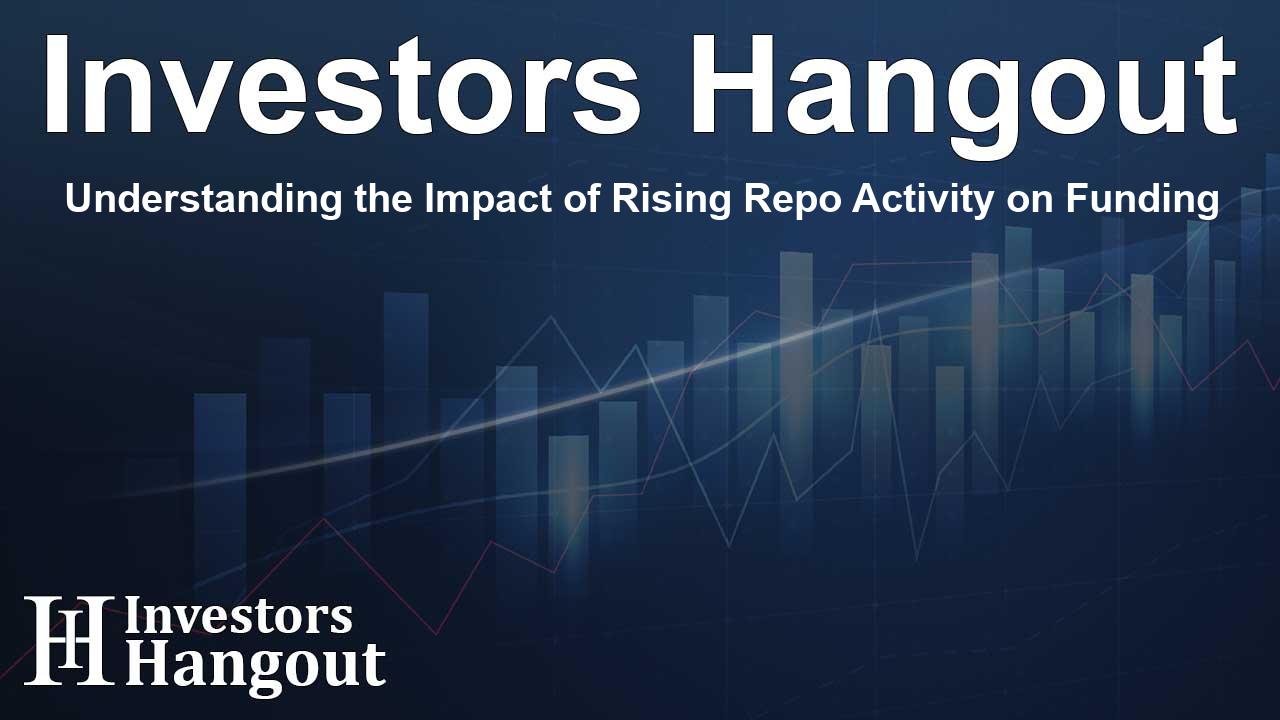Understanding the Impact of Rising Repo Activity on Funding

The Rising Repo Activity and Its Implications
The recent rise in overnight repurchase agreements, commonly referred to as repos, has significantly influenced the financial landcape. This surge has put immense stress on banks that serve as intermediaries in these transactions, creating potential funding pressures at crucial periods such as quarter-ends and year-ends.
What Are Repurchase Agreements?
Repurchase agreements are short-term loans where securities, typically U.S. Treasury bonds, are used as collateral. In this arrangement, a borrower sells the securities with the commitment to repurchase them at a later date for a pre-determined price. This mechanism allows banks and financial institutions to swiftly secure funds with minimal risk.
Why Are Repos So Popular?
The appeal of the repo market, which is valued at nearly $4 trillion, lies in its efficiency. Financial players, including hedge funds and other investment firms, rely heavily on repos to conduct trades. A disruption in this market can compel these institutions to sell off assets, drastically influencing stock and bond markets.
The Effect of High Demand
The demand for repos has always been robust, primarily because they allow for cheaper liquidity that reduces dependence on traditional bank loans. As trading strategies evolve and gain traction, the volume of repos has surged. Unfortunately, primary dealers are hesitant to increase their capital reserves to manage the higher trading activities, leading to systemic risks.
The Role of Primary Dealers
Primary dealers play a crucial role in the repo market as intermediaries. However, during specific financial reporting periods, they tend to reduce their involvement due to elevated balance sheet costs. This withdrawal often leads to significant spikes in repo rates, particularly at the end of financial quarters. For instance, the secured overnight financing rate (SOFR) rose sharply as the third quarter ended.
Market Reactions and Stability Concerns
The dynamics observed at the close of September highlighted vulnerabilities in the market. Analysts noted that the constrained capacity of dealers to meet repo demand could lead to greater market volatility and heightened short-term borrowing costs in the future.
Recent Market Developments
On September 30, a record SOFR volume reached $2.5 trillion, marking a significant increase from the previous day. Additionally, Treasury repos processed through the Delivery-versus-Payment (DVP) service saw transactions soar to $1.7 trillion during the same period.
Basis Trades and Their Impact
The sharp uptick in repo activity can be attributed to a rise in basis trades — strategies that exploit pricing discrepancies between cash Treasuries and futures. These trades are heavily financed within the repo market. With the Federal Reserve's move to increase interest rates, hedge funds have actively bought Treasuries and then hedged against those positions, further stressing the repo system.
Dealer Constraints and the Future
The ongoing constraints on primary dealers' balance sheets can lead to further challenges. Many dealers have refrained from increasing their Treasury holdings due to prior market conditions, preferring to maintain a leaner profile as they manage risk exposure and profitability.
Balancing Profitability and Risk
While repo transactions constitute a considerable portion of the balance sheets for primary dealers, their current profitability is under pressure. With the SOFR at 4.83%, which is lower than the interest on reserve balances at the Fed, dealers are inclined to avoid repo activities in favor of higher-yielding reserve holdings.
In conclusion, the increasing activity in the repo market presents both opportunities and challenges for financial institutions. As the demand for repos continues to rise, it is essential for market players to navigate these conditions carefully to maintain stability and minimize financial risk.
Frequently Asked Questions
What is a repurchase agreement?
A repurchase agreement (repo) is a short-term borrowing transaction where securities are sold and later repurchased at a predetermined price.
Why has repo activity surged recently?
The repo market has seen increased activity due to the growing reliance on repos for financing trades and basis trades taking advantage of price disparities.
How do primary dealers influence the repo market?
Primary dealers act as intermediaries in the repo market. Their willingness to lend impacts the availability of funds and the prevailing interest rates.
What are the risks of rising repo activity?
Increased activity can lead to potential funding pressures and market volatility, especially if primary dealers withdraw from intermediation.
How does SOFR relate to repo transactions?
The secured overnight financing rate (SOFR) is a benchmark for repo transactions. Fluctuations in SOFR reflect changes in demand and supply in the repo market.
About The Author
Contact Lucas Young privately here. Or send an email with ATTN: Lucas Young as the subject to contact@investorshangout.com.
About Investors Hangout
Investors Hangout is a leading online stock forum for financial discussion and learning, offering a wide range of free tools and resources. It draws in traders of all levels, who exchange market knowledge, investigate trading tactics, and keep an eye on industry developments in real time. Featuring financial articles, stock message boards, quotes, charts, company profiles, and live news updates. Through cooperative learning and a wealth of informational resources, it helps users from novices creating their first portfolios to experts honing their techniques. Join Investors Hangout today: https://investorshangout.com/
The content of this article is based on factual, publicly available information and does not represent legal, financial, or investment advice. Investors Hangout does not offer financial advice, and the author is not a licensed financial advisor. Consult a qualified advisor before making any financial or investment decisions based on this article. This article should not be considered advice to purchase, sell, or hold any securities or other investments. If any of the material provided here is inaccurate, please contact us for corrections.
